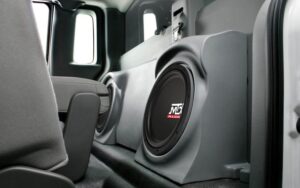
As a car owner, one of the most important parts of your vehicle that you should take care of are the tires. They are the only part of the car that touches the ground and can significantly affect your ride’s overall performance and safety. Choosing the right tire for your car can be overwhelming. Still, with these 7 tips, you can make an informed decision that will improve your driving experience.
Introduction
Choosing the right tire for your car can be a daunting task, especially for those unfamiliar with the different types of tires and what they are designed for. However, having the right tire can improve your car’s handling, braking, and overall performance. This article will provide 7 tips to help you choose the best tire for your car.
Consider Your Driving Habits
Your driving habits are the first thing you should consider when choosing a tire. Are you a daily commuter who drives mostly on highways? Do you live in an area with a lot of snow and ice? Do you frequently drive on unpaved roads? Knowing your driving habits can help you choose the right tire to provide the best performance and safety for your specific needs.
Check Your Owner’s Manual
Your car’s owner’s manual is a valuable resource that can help you determine the right tire size and type for your vehicle. It will also provide recommendations for the proper inflation pressure and rotation pattern. Following the manufacturer’s recommendations can help you maintain your car’s warranty and ensure optimal performance.
Know the Different Types of Tires
Several types of tires are available in the market, each designed for specific driving conditions. Here are the most common types of tires:
All-Season Tires
All-season tires are designed to provide good performance in various weather conditions, including dry, wet, and light snow. They are a popular choice for those who live in areas with mild climates and do not experience extreme weather conditions.
Summer Tires
Summer tires are designed for maximum performance in warm and dry conditions. They provide better grip and handling on dry roads but can be dangerous on wet and slippery surfaces.
Winter Tires
Winter tires, known as snow tires, are designed for optimal performance in cold and snowy conditions. They have a unique tread pattern that provides better traction on snow and ice, and they are made of a softer rubber compound that can withstand low temperatures.
Performance Tires
Performance tires are designed for high-performance vehicles and provide maximum grip and handling at high speeds. They have a low profile and a softer rubber compound, providing better dry road traction.
Consider the Tire Size and Speed Rating
Choosing the right tire size is critical for maintaining the safety and performance of your car. The tire size can affect the accuracy of the speedometer and the car’s stability. The speed rating indicates the maximum speed that the tire can handle safely. Ensure the tire size and speed rating are compatible with your car’s specifications.
Look at the Treadwear and Traction Ratings
The treadwear rating indicates the tire’s life expectancy, and the traction rating indicates the tire’s ability to stop on wet surfaces. Both ratings are important when choosing a
Tire because they can affect the overall performance and durability of the tire. A higher treadwear rating means the tire can last longer, but it may not provide as much traction as a tire with a lower treadwear rating. On the other hand, a tire with a higher traction rating can provide better stopping power on wet surfaces, but it may wear out faster.
Set Your Budget
Tires come in different price ranges, and it’s essential to set a budget that fits your needs and preferences. It’s important to remember that the cheapest option may not always be the best choice, as it may compromise the performance and safety of your car. Consider the features and benefits of each tire and choose the one that provides the best value for your money.
Conclusion
Choosing the right tire for your car can be a daunting task. Still, by considering your driving habits, checking your owner’s manual, knowing the different types of tires, considering the tire size and speed rating, looking at the treadwear and traction ratings, and setting your budget, you can make an informed decision that will improve your driving experience. Remember to follow the manufacturer’s recommendations for maintenance and replacement to ensure optimal performance and safety.
FAQs
How often should I replace my tires?
Experts recommend replacing your tires every six years, regardless of their apparent condition.
What is the recommended inflation pressure for my tires?
You can find the recommended inflation pressure for your car’s tires in either the owner’s manual or the tire placard on the driver’s side doorjamb.
Can I mix different types of tires on my car?
Mixing different types of tires on your car can affect the performance and safety of the vehicle, so experts recommend avoiding them.
What is the difference between a tire’s speed rating and load index?
The speed rating indicates the maximum speed the tire can handle safely, while the load index indicates the maximum weight the tire can carry.
Do I need to replace all four tires at once?
To maintain consistent handling and performance, we recommend replacing all four tires at once. However, if only one tire needs replacement, it’s important to match the new tire with the same brand, model, and size as the existing tires.








